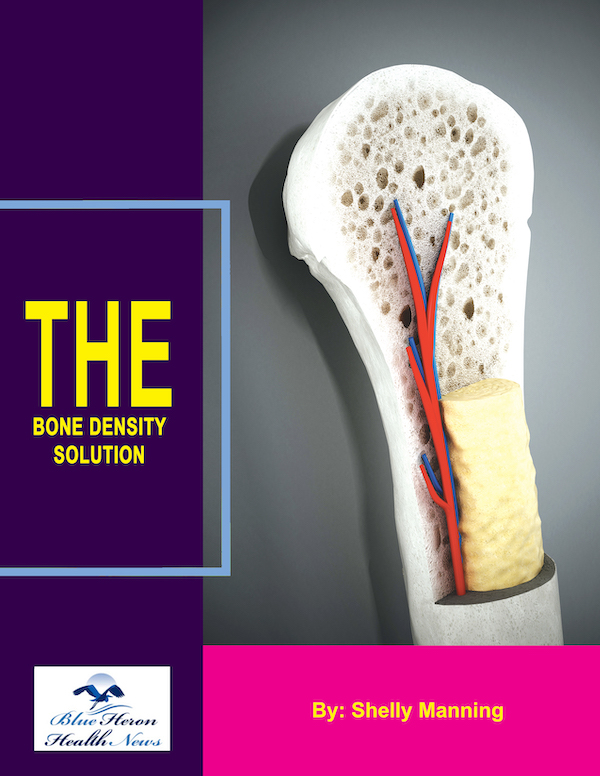
The Bone Density Solution by Shelly ManningThe program is all about healthy food and healthy habits. As we discussed earlier, we develop osteoporosis due to low bone density. Therefore, you will have to choose the right food to help your calcium and other vitamin deficiencies. In addition to healthy food, you will have to regularly practice some mild exercises. Your doctor might offer you the same suggestion. However, the difference is that The Bone Density Solution will help you with an in-depth guide.
Can low bone density lead to complications in India?
Yes, low bone density can lead to several severe complications in India, as it does globally. These complications arise due to weakened bones, making individuals more susceptible to fractures and other bone-related issues. Here are some of the key complications associated with low bone density:
Fractures
- Osteoporotic Fractures:
- The most common and serious complication of low bone density is fractures, particularly in the hip, spine, and wrist. These fractures can occur from minimal trauma, such as a fall from standing height or even less in severe cases of osteoporosis (World Health Organization (WHO)) (Nature).
- Hip Fractures:
- Hip fractures are particularly concerning as they often require surgery and can lead to significant disability. Recovery can be prolonged, and there is a high risk of complications such as infections, blood clots, and loss of independence. Studies indicate that hip fractures are associated with increased mortality, especially in older adults (Nature) (World Health Organization (WHO)).
- Spinal Fractures:
- Vertebral fractures can lead to chronic pain, loss of height, and spinal deformities such as kyphosis (a stooped posture). These fractures can severely impact mobility and quality of life. Multiple vertebral fractures can result in significant spinal deformity and persistent pain (World Health Organization (WHO)) (World Health Organization (WHO)).
- Wrist Fractures:
Chronic Pain and Disability
- Chronic Pain:
- Fractures, particularly in the spine and hip, can lead to chronic pain that affects daily activities and overall quality of life. Persistent pain from vertebral fractures can be debilitating and difficult to manage (Nature) (World Health Organization (WHO)).
- Reduced Mobility:
- Fractures and chronic pain can lead to reduced mobility and physical activity, which in turn can exacerbate bone loss and muscle weakness, creating a vicious cycle. Limited mobility can also increase the risk of falls, further increasing fracture risk (IHCI).
- Disability:
- Severe osteoporosis and recurrent fractures can result in long-term disability, making it challenging for individuals to perform everyday tasks and maintain independence. This can have profound social and psychological impacts, including depression and anxiety (World Health Organization (WHO)) (IHCI).
Increased Mortality
- Post-Fracture Mortality:
- Hip and vertebral fractures are associated with increased mortality, particularly in older adults. The risk of death in the first year following a hip fracture is significantly higher compared to the general population, largely due to complications related to the fracture and subsequent immobility (Nature) (World Health Organization (WHO)).
Economic and Healthcare Burden
- Healthcare Costs:
- The treatment and management of fractures resulting from low bone density impose a significant economic burden on the healthcare system. This includes costs associated with hospitalization, surgery, rehabilitation, and long-term care (IHCI).
- Impact on Families:
- The need for long-term care and support for individuals with severe osteoporosis and fractures can also strain families economically and emotionally. Caregiving responsibilities can impact the caregivers’ own health and economic stability (World Health Organization (WHO)) (IHCI).
Prevention and Management
- Early Detection and Treatment:
- Early detection of low bone density through regular screening (e.g., DEXA scans) and proactive treatment can help prevent fractures. Medications such as bisphosphonates, calcium and vitamin D supplements, and lifestyle modifications play a crucial role in managing osteoporosis (World Health Organization (WHO)) (Nature).
- Public Health Initiatives:
- Efforts to increase awareness about bone health, promote regular screening, and provide access to treatment are essential. Public health initiatives targeting nutrition, physical activity, and fall prevention can significantly reduce the incidence and impact of low bone density complications (World Health Organization (WHO)) (IHCI).
Conclusion
Low bone density can lead to severe complications, including fractures, chronic pain, reduced mobility, disability, and increased mortality. Addressing these issues through early detection, effective treatment, and preventive measures is crucial to mitigate the impact on individuals and the healthcare system in India (World Health Organization (WHO)) (Nature) (World Health Organization (WHO)) (IHCI).
References
- Mayo Clinic – Bone Density Test
- National Osteoporosis Foundation
- International Osteoporosis Foundation
- Journal of Clinical Densitometry
The Bone Density Solution by Shelly ManningThe program is all about healthy food and healthy habits. As we discussed earlier, we develop osteoporosis due to low bone density. Therefore, you will have to choose the right food to help your calcium and other vitamin deficiencies. In addition to healthy food, you will have to regularly practice some mild exercises. Your doctor might offer you the same suggestion. However, the difference is that The Bone Density Solution will help you with an in-depth guide.
